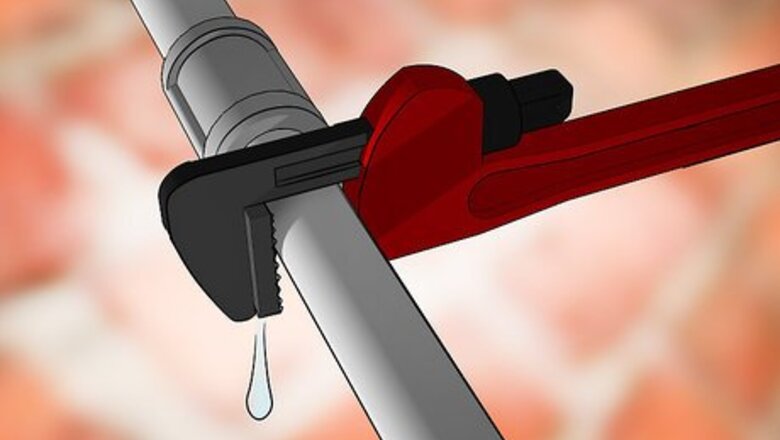
views
X
Expert Source
Victor BelavusAir Conditioning Specialist
Expert Interview. 6 May 2020.
Controlling Humidity from inside the House
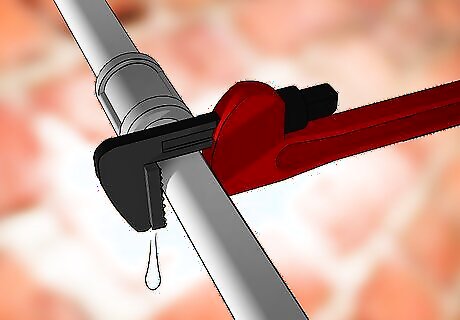
Repair leaks around the house. Plumbing problems and leaks are among the most common sources of interior moisture that cause humidity in the basement. Check for leaky pipes, fixtures, toilets, and other plumbing. These can cause moisture in the house that drips down into the basement, creating dampness and wet spots. Signs of a plumbing leak causing dampness in the basement include water stains and wet spots on the ceiling in the basement. To inspect for leaks that you can't see, check your water meter reading and don’t use any water in the house for 2 hours. Check the reading again after 2 hours. If there's been a change, you have a leak somewhere that needs to be addressed. You may be able to address simple repairs yourself, such as changing a leaky washer, fixing a running toilet, or tightening a loose joint. For larger jobs, or if you don’t have much experience with plumbing maintenance, call in a professional to fix the leak.
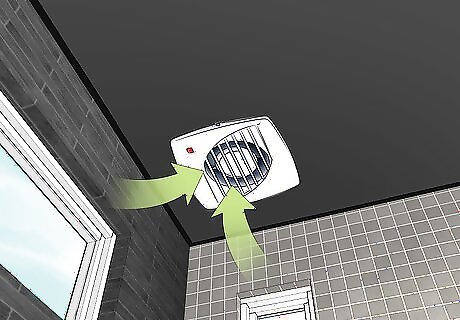
Use exhaust fans in the bathrooms and kitchens. Steam from hot showers, baths, and cooking can also increase the humidity levels in your basement and throughout the house. Always run exhaust fans in the bathroom when bathing, and run the exhaust fan in the kitchen when cooking. You can also reduce steam by covering pots with lids when you cook, and by taking cooler showers and baths. If you don’t have exhaust fans, open windows when you shower or cook.
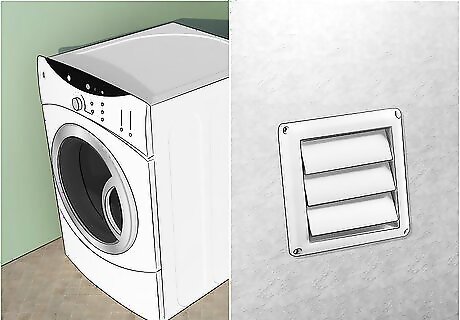
Install a dryer vent. Your clothes dryer produces a great deal of moisture, because moisture evaporates from wet clothes as they dry. To prevent that wetness from ending up in your basement, install a vent if necessary to vent your dryer directly outside. This is most likely a job that will require a professional, because you'll have to cut into the frame of your house to install the vent. The job will likely cost around $200 USD. Inspect hoses and ducts regularly for cracks and holes that could be causing leaks, and replace the duct or hose if you find signs of wear and tear.
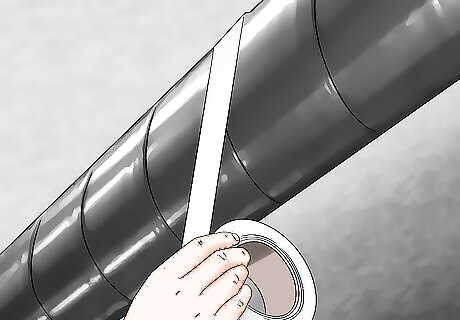
Seal leaks in your ductwork. Ducts that carry warm and cold air around your house can also create humidity in the basement if there are leaks that allow moist air to seep out. If you suspect there's a leak in your ductwork, call in an HVAC expert for an inspection and repair.
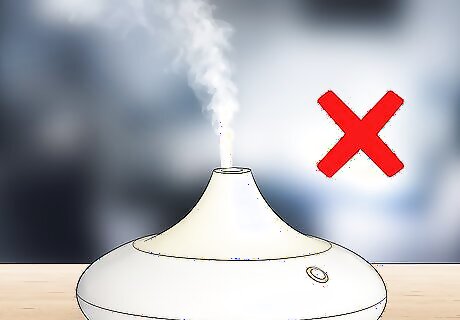
Turn off humidifiers. Many people use humidifiers around the house to make the air more comfortable, but this can lead to problems if you're already having trouble with moisture in the basement. To reduce humidity, don’t run humidifiers in the house, and especially not in the basement. To make air in the house less dry, turn down the temperature of the furnace.

Remove moisture from the air with a dehumidifier. A dehumidifier isn't a permanent solution to moisture in the basement, but it will remove excess humidity while you fix the cause of the problem. Place the dehumidifier in the dampest part of the basement and turn it on. Depending on the size of your basement and the capacity of the appliance, you may need 2 dehumidifiers. Empty the dehumidifier reservoir whenever it becomes full, typically once every 2 days. This will prevent spills and keep the appliance working well. Use a dehumidifying ventilator to extract the moist air and move it outside.
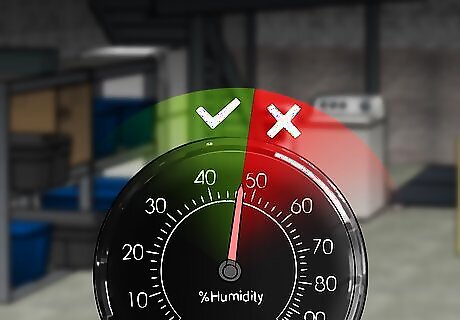
Measure humidity levels with a hygrometer. A hygrometer is a device that measures moisture in the air. You can buy them at most home and hardware stores. The ideal humidity level for a basement is below 50 percent. Anything over 80 percent is problematic, because that’s when mold and mildew will flourish. When the humidity level starts to rise, use the dehumidifier to control moisture while you address the cause.
Controlling Exterior Moisture Sources
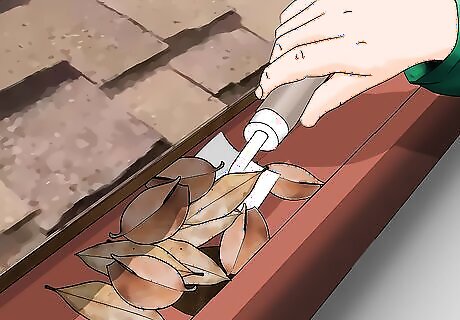
Keep your gutters clean. Another common source for humidity in a basement is external water, which can come from precipitation or groundwater. Gutters are designed to collect precipitation and move the water away from your house, but they have to be free of debris to work properly.Clean your gutters every spring and fall to remove leaves, dirt, pinecones, and other matter that could clog the spouts. When gutters become clogged, water builds up inside and drips over the edges. The water then collects around the base of your house, and may seep in through the foundation.
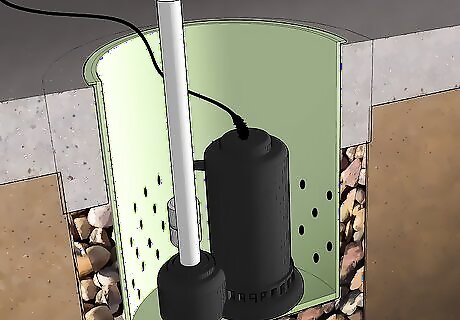
Maintain your sump pump. Sump pumps, which are found in the basement or bottom floor of the house, should be inspected annually. Check that the pump is in good working order, that the pump is upright, and that it’s properly pumping water away from the house. A sump pump system collects water from around the foundation of the house, drains it into a sump pit, and then pumps the water away from the house. In order to perform this task, the sump system has to be properly cleaned and maintained. Not all houses have sump pumps. If you're not sure, check your basement for the sump pit, which is a large reservoir dug into the floor to collect water.
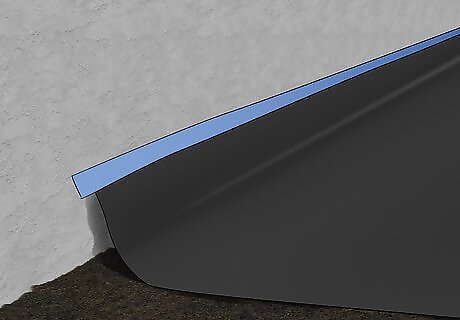
Cover dirt basement floors with a plastic barrier. Some basements just have a dirt floor, and water vapor can easily enter the basement through the soil. To prevent this from happening, cover the floor with sheets of 6-millimeter plastic. Overlap the seams of the plastic to prevent moisture from getting through, and attach the plastic to the walls with tape or staples.
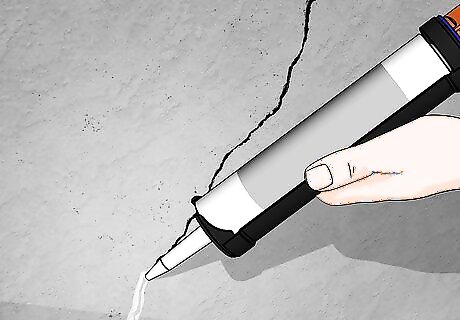
Fix holes or leaks in the foundation. Holes, cracks, and other openings in the foundation are easy ways for moisture to enter your basement. Small holes can be repaired with a polyurethane masonry caulk, but you should use hydraulic cement to fix larger holes. Typically, you can address a small crack in the foundation as long as it’s vertical. Call in a professional if the crack is horizontal, diagonal, or growing, or if you want it assessed by an expert. The foundation is the structure on which your house is built, so it’s always best to consult an expert if you're unsure of a problem.
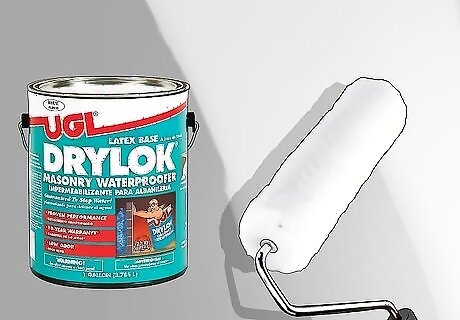
Coat the walls with a waterproof material. Most foundation material is porous, including concrete and stone. This means water can seep into your basement through the foundation. There are several products you can apply to your basement walls to make them waterproof, and they can be applied like paint. Look for masonry waterproof coatings like Xypex or Drylok.
Preventing Humidity from Condensation
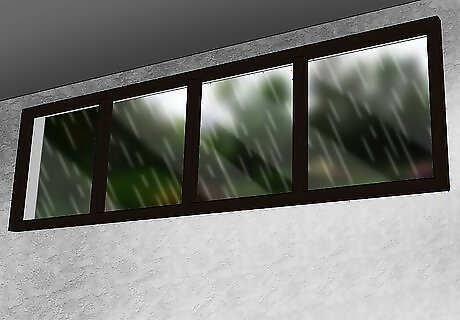
Close basement windows on humid days and nights. The third way that moisture can get into your basement is through condensation. Closing basement windows when the relative humidity outside is over 50 or 60 percent will prevent humid air from entering your house, and prevent condensation from forming. This is especially important in the warmer spring and summer months. Condensation forms when warm, humid air comes into contact with a cold surface, such as your basement wall or floor.
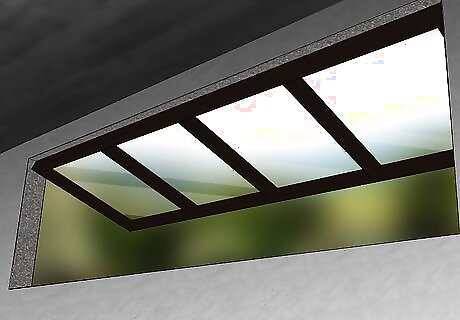
Increase ventilation in the basement. Increasing the air flow will make it harder for condensation to form, because the movement will help to drive moisture out of the air. Increase ventilation in the basement by opening windows on non-humid days, by running fans, and by using exhaust vents.
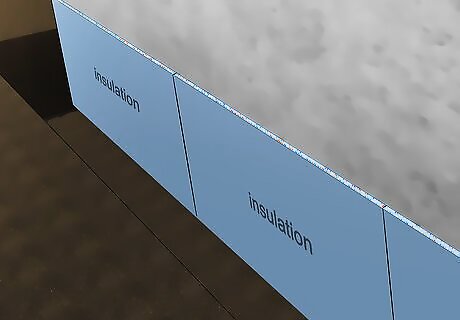
Add extra insulation to exterior basement walls. Along with preventing humid air from entering your basement, another way to prevent condensation is to insulate the walls to keep them warmer. When the walls are warmer, humid air won’t condense on them. Only insulate exterior walls after addressing leaks and other areas where water is entering the basement from outside. Otherwise, you'll trap water behind the insulation and end up with mold.
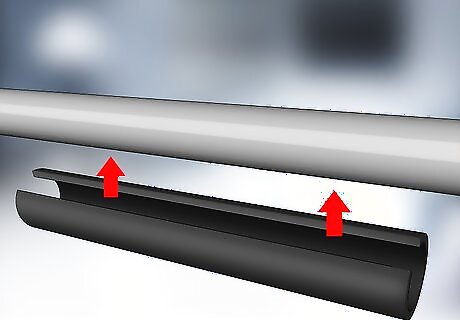
Insulate cold water pipes. Cold water pipes are a classic place for condensation to form, because they're typically cooler than surrounding surfaces. Buy some foam pipe insulation, cut it to size for the pipes, and wrap the pipes with the insulation. This will prevent moisture from collecting on the pipes and condensation from forming.


















Comments
0 comment